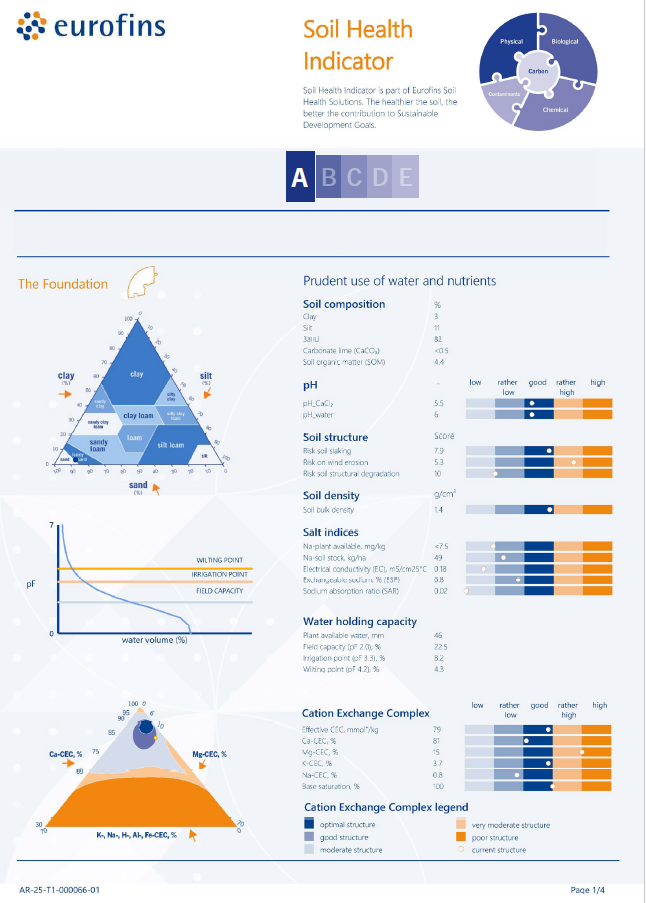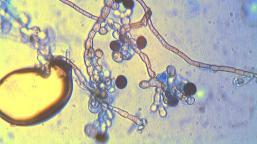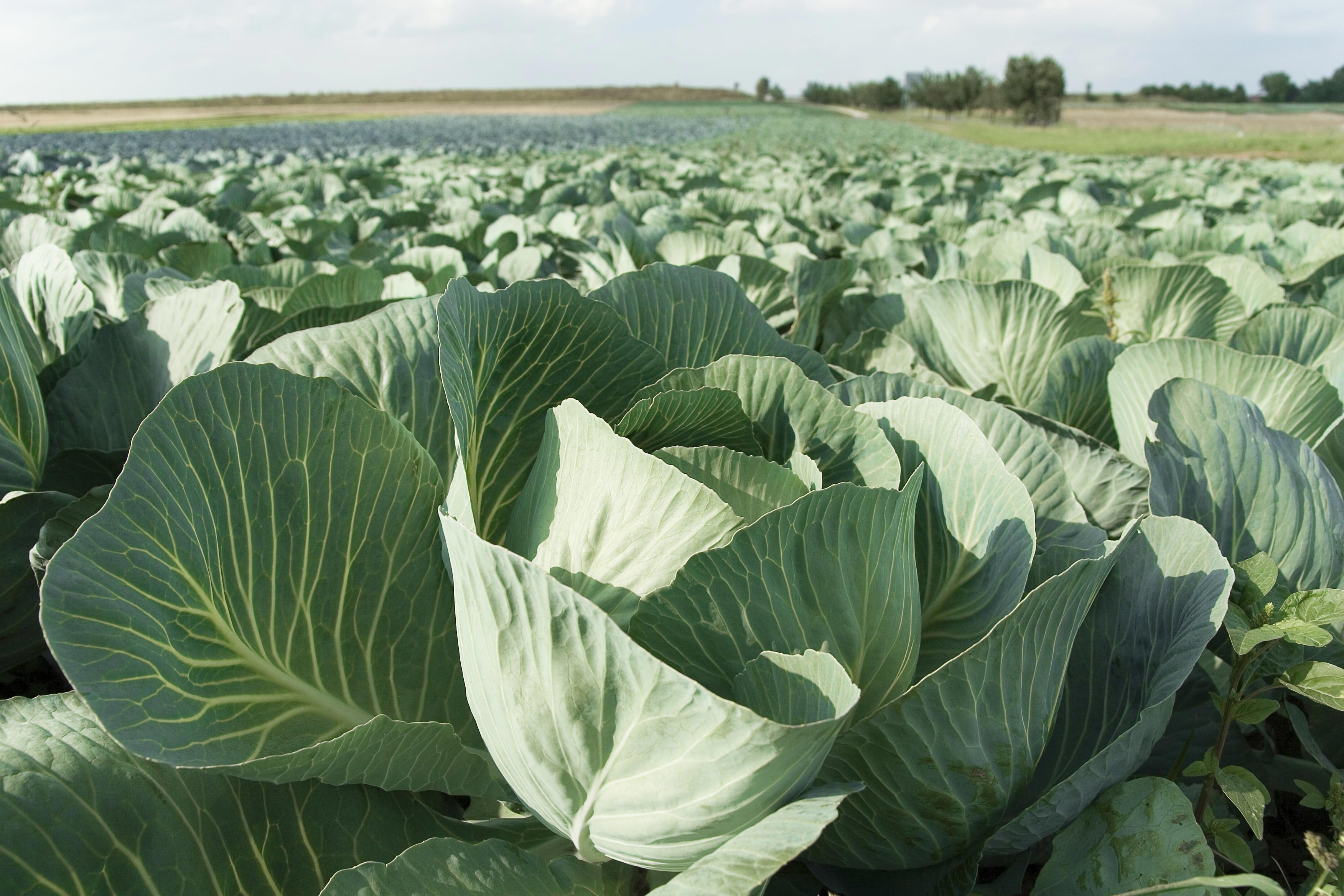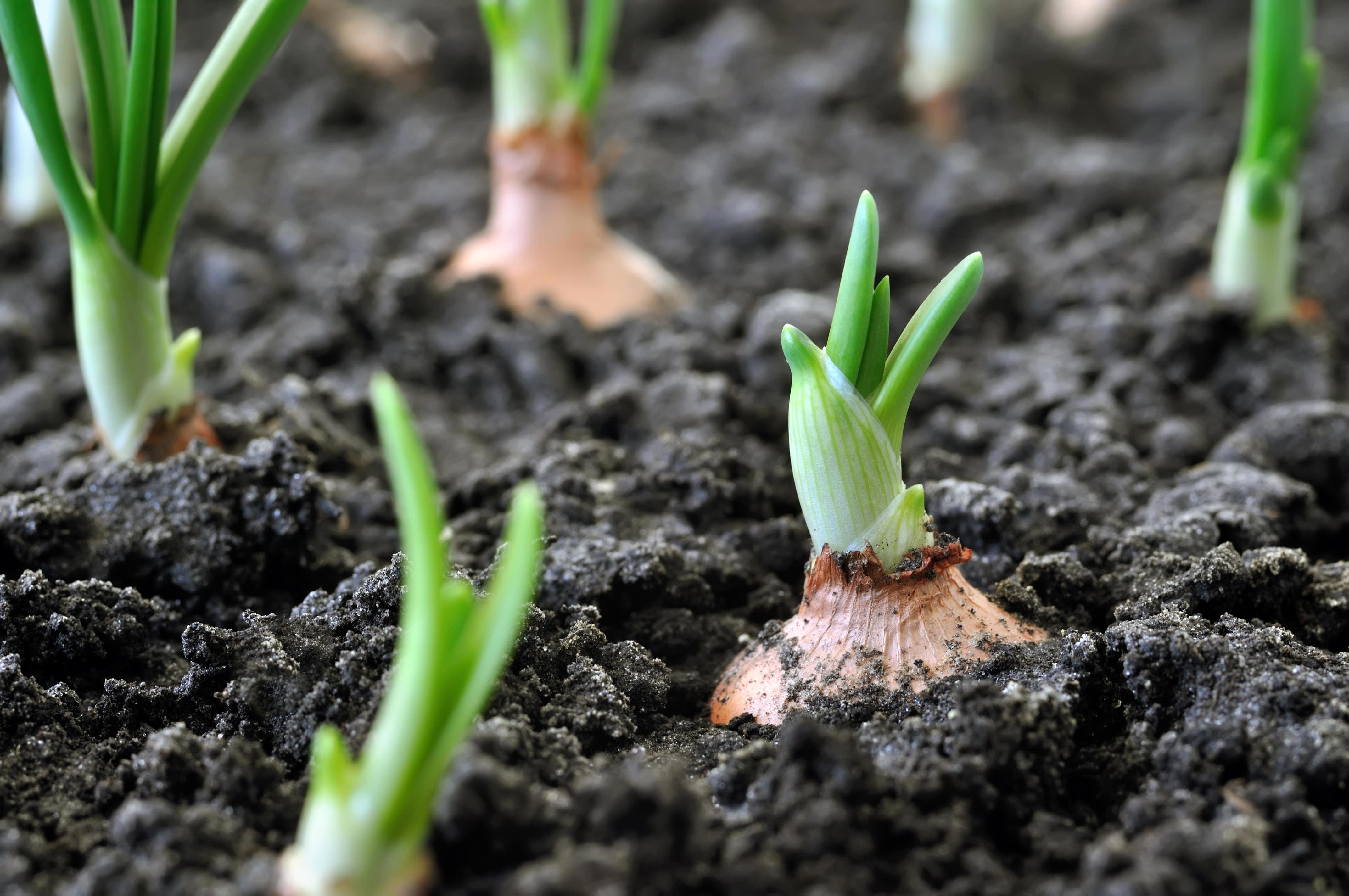Understand, monitor and improve soil health

Get complete insight in the soil puzzle
Working towards healthy soil in agriculture is like solving a complex jigsaw puzzle, where all the pieces must fit together and be balanced.
Soil Health Indicator is an analysis package that gives deep insight into the following soil characteristics:
- Chemical
- Physical
- Biological
- Carbon
- Potential contaminants
This helps farmers and land managers gain control of this puzzle by providing accurate data to tackle challenges, from nutrient management planning to carbon sequestration.
It also contributes to more resilient crops, cleaner water, sustainable production, greater biodiversity, and helps to store carbon and reduce CO2 emissions. These are all factors that help farmers and land managers run businesses that are more environmentally and financially sustainable.
Below we highlight a few of the specialties on the Soil Health Indicator.
Cation Exchange Capacity (CEC)
Determines how well soil retains and exchanges nutrients. High CEC means soil can hold essential nutrients like calcium, magnesium, and potassium. Elements like aluminum and hydrogen can negatively affect soil fertility.
Salt indices
Detailed salinisation indicators are not only ideal for soils in coastal areas but also for identifying the risk of salinisation problems during dry periods. The report provides insight into various sodium indicators (plant-available sodium (Na), Sodium Absorption Ratio (SAR), and the percentage of exchange-
able sodium (ESP)).
Micro nutrients
Micro nutrients are essential for plant and microorganism growth. Elements like zinc, copper, iron, and manganese are crucial for photosynthesis, enzyme activity, and nutrient uptake.

A-B-C-D-E score
A simple method to assess soil health. The A-B-C-D-E score provides quick insight into soil health status and the impact of actions taken. Each letter represents a specific soil condition.

Soil Life
Diverse soil life is vital for healthy soil. This reports maps the microorganisms – a.k.a. microscopic miracle workers – in the soil. As a result, you can work in a targeted way on soil that is less susceptible to diseases and pests, retains and delivers more nutrients, has improved water holding capacity, and can store more CO2.
Contaminants
Measuring the amount of biologically available heavy metals is essential. Depending on the soil pH, certain metals can be absorbed by crops to a greater or lesser extent. These harmful substances can threaten plant health and food safety, for example when aluminium causes root damage.

Soil-based advice
With soil-based recommendations to invest in healthy and resilient soil for the future. This includes improving pH, optimising soil fertility, balancing the nutrients bound to the CEC to improve soil structure, and guidelines to maintain or improve the soil’s organic matter status.

Crop-based advice
Crop-based fertilisation recommendations for up to six crops is generated based on all analysis results in the package. By working with expected yields, advice can be tailored and adjusted up or down if necessary.

A-B-C-D-E score
By regularly evaluating soil health using Soil Health Indicator and assigning a score, you can monitor the effectiveness of your soil management practices and provide evidence of progress of soil improvement. The A-B-C-D-E score is thus a valuable tool for both making strategic decisions and demonstrating sustainable performance, for example in reports or certifications for the agri-food industry.
Available for different sectors
To help governments, nature & forest, urban & industry sectors develop data-driven strategies to improve soil health - essential for resilient ecosystems, clean water, rich biodiversity, and thriving communities.

